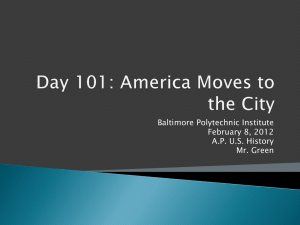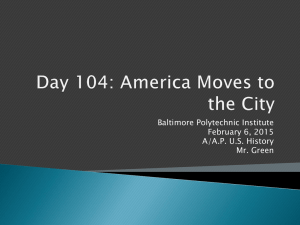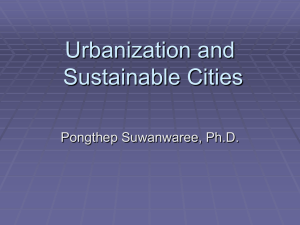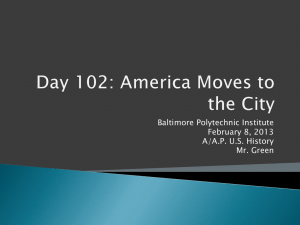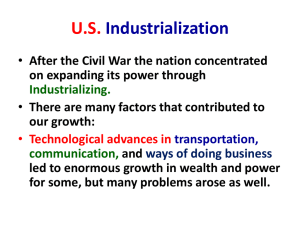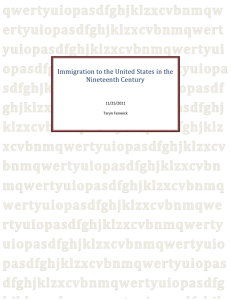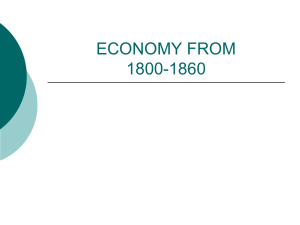AP_103rd_Day_Feb_11_2013 - Baltimore Polytechnic Institute
advertisement
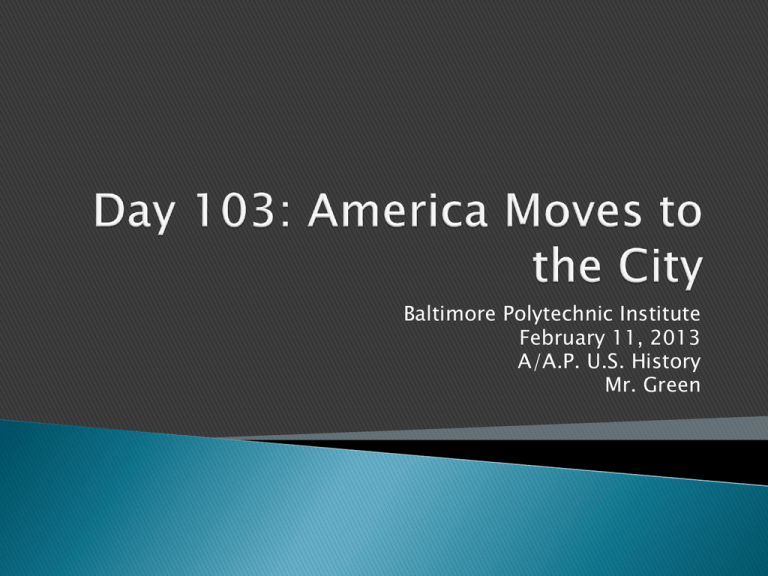
Baltimore Polytechnic Institute February 11, 2013 A/A.P. U.S. History Mr. Green The students will be able to analyze the changes through the 1890s by describing the problems and prospects of the Gilded Age Objectives: Students will: Describe the rise of the American industrial city, and place it in the context of worldwide trends of urbanization and mass migration (the European diaspora). Describe the New Immigration, and explain how it differed from the Old Immigration and why it aroused opposition from many native-born Americans. Discuss the efforts of social reformers and churches to aid the New Immigrants and alleviate urban problems, and the immigrants’ own efforts to sustain their traditions while assimilating to mainstream America. AP Focus Industrialization sparks urbanization, and cities become magnets for immigrants. Those who can afford to leave behind the hustle and bustle of urban life move to the budding suburbs. See the table in The American Pageant (13th ed., p. 560/14th ed., p. 598). Demographic Changes is an AP theme. The late nineteenth century sees a surge of immigration, now from eastern and southern Europe. Most encounter living and working conditions not appreciably better than what they had left. The tenement floor plan (13th ed., p. 561/14th ed., p. 599) shows typical living conditions for impoverished urban workers. CHAPTER THEMES In the late nineteenth century, American society was increasingly dominated by large urban centers. Explosive urban growth was accompanied by often disturbing changes, including the New Immigration, crowded slums, new religious outlooks, and conflicts over culture and values. While many Americans were disturbed by the new urban problems, cities also offered opportunities to women and expanded cultural horizons. 1890s Decade chart due on Wed 5QQ on Tuesday Liberal Protestants rejected biblical literalism stories as models for behavior Roman Catholics 1900-largest single denomination Judaism Salvation Army-from England Church of Christ, Scientist-heal the sick YMCA, YWCA Natural Selection nature blindly picked organisms for survival or death based on random, inheritable variations they possessed 1875 many scientists embraced theory of organic evolution Clergy response to Darwin Initially, most rejected Darwin 2 groups by 1875 Scripture as the infallible Word of God gave rise to fundamentalism in 20th century accommodationists tried to reconcile Darwinism with Christianity Science began to explain more of the external world By 1870, more states made grade school education compulsory Prior to the Civil War, there were few public high schools, mainly private academies By 1900 there were 6,000 public high schools with free textbooks Teacher training schools Kindergartens from Germany Catholic parochial schools Chautauqua movement nationwide public lectures Illiteracy rate 20% in 1870 10.7% in 1900 Headed the Black normal and industrial school in Tuskegee, AL Taught trades to gain self respect/economic security Accommodationist Washington did not challenge white supremacy Avoided issue of social equality economic independence would be the answer George Washington Carver W.E.B. Du Bois did not support Washington’s position Argued Washington condemning AfricanAmerican race to manual labor and inferiority Demanded complete equality for blacks Founded the NAACP talented tenth Differences between the two highlights the contrasting lifestyles of the North and South Morrill Act of 1862 provided grant of public lands to the states for education Land Grant Colleges-state universities Hatch Act of 1887 extended Morrill Act federal money for agricultural experiment stations Philanthropic colleges Cornell Stanford University of Chicago Universities Johns Hopkins Education moved away from a religious framework to more practical and specialized instruction Elective system Field of concentration Specialization Medicine Louis Pasteur Joseph Lister William James-pragmatism truth of an idea to be tested by its practical consequences Why was Darwinian evolution such a controversial challenge for American religious thinkers? Why were religious liberals able to dominate Americans’ cultural response to evolution? How did a minority resistance to evolution lay the basis for the later rise of fundamentalism? 1. What new opportunities and social problems did the cities create for Americans? 2. In what ways was American urbanization simply part of a worldwide trend, and in what ways did it reflect particular American circumstances? How did the influx of millions of mostly European immigrants create a special dimension to America’s urban problems? 3. How did the New Immigration differ from the Old Immigration, and how did Americans respond to it? 4. How was American religion affected by the urban transformation, the New Immigration, and cultural and intellectual changes? Begin Reading second ½ of Chapter 25 Prepare for multiple choice on Friday 1890s Decade Chart due on Wed

